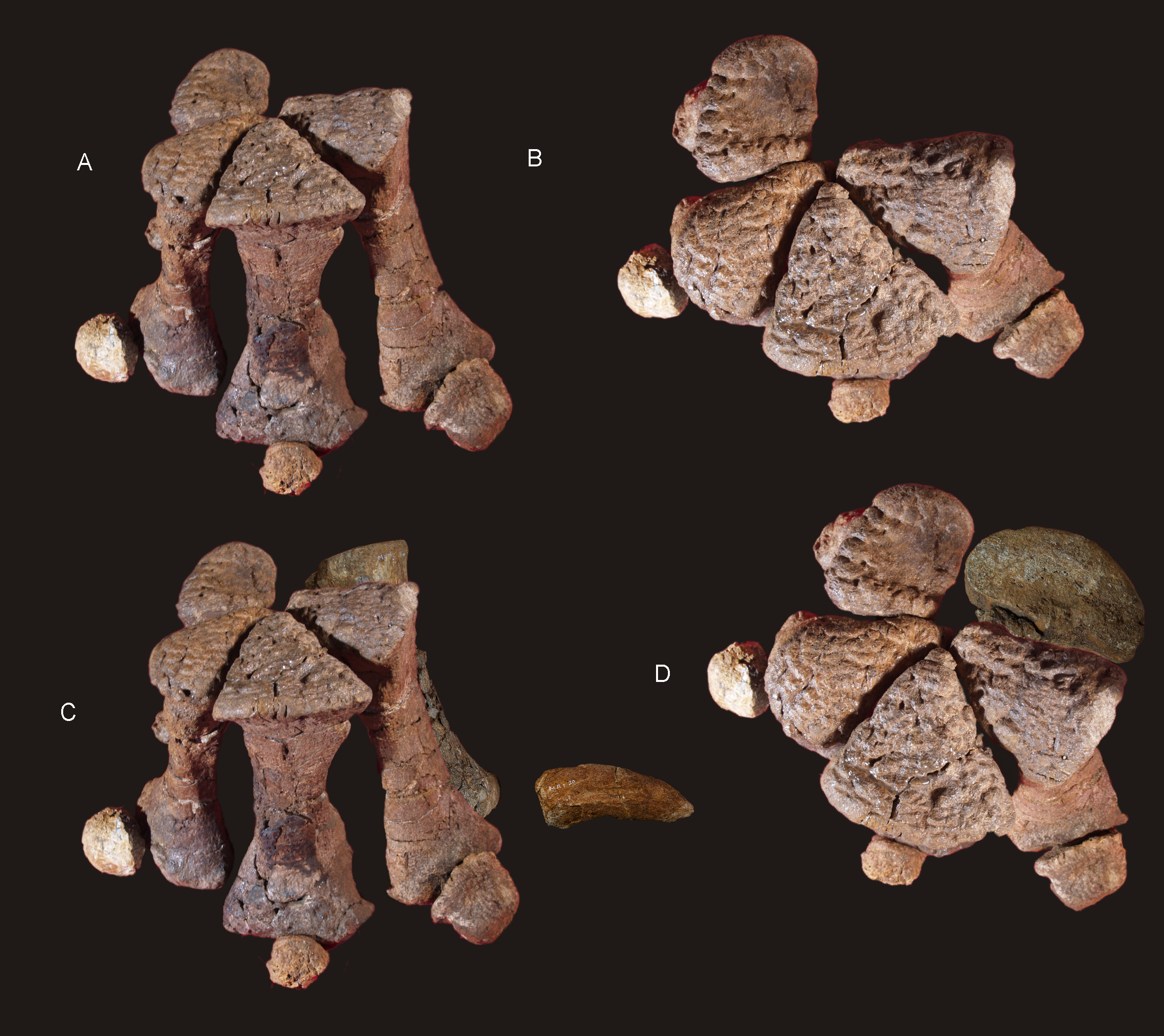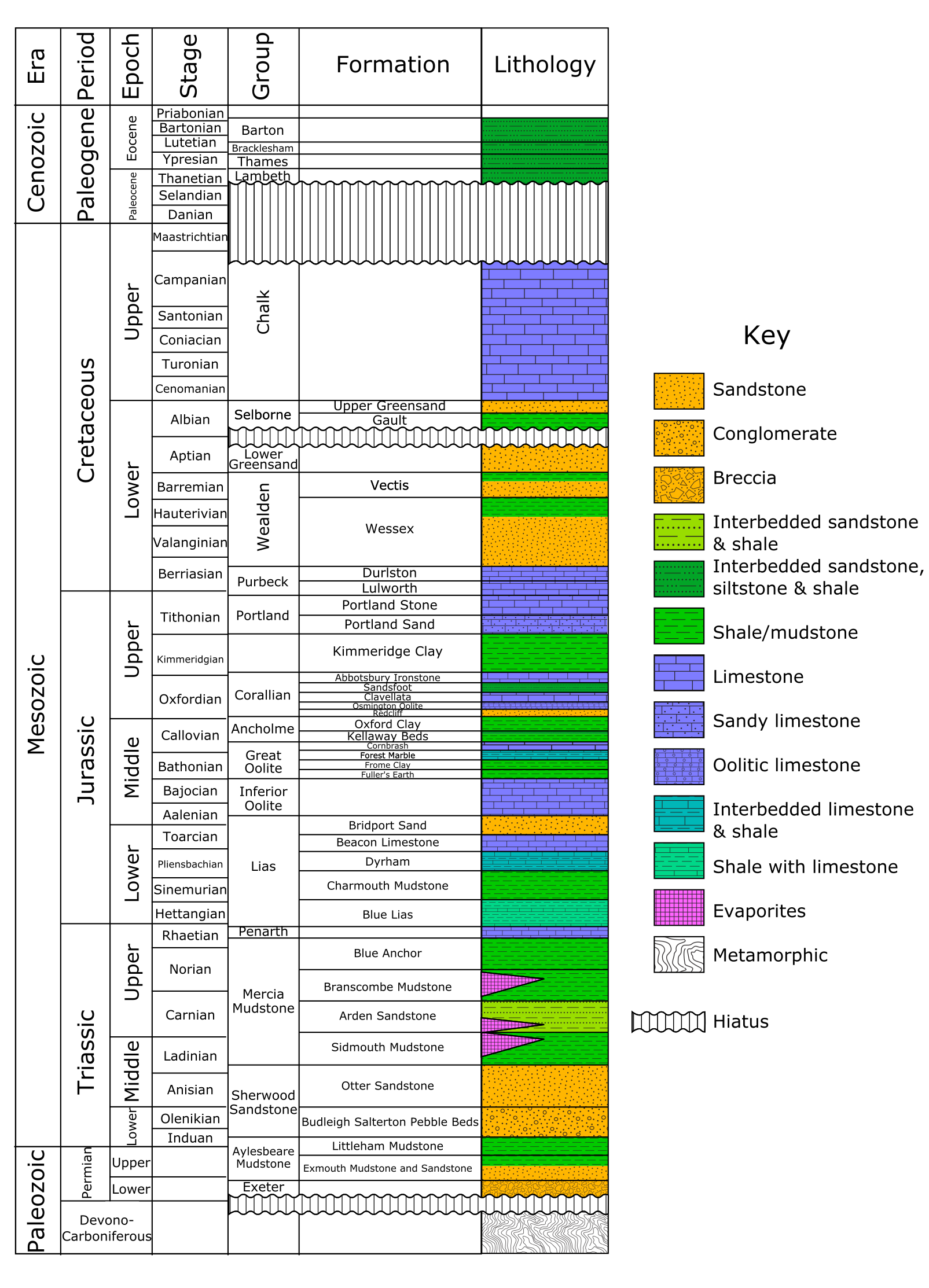|
Iuticosaurus
''Iuticosaurus'' (meaning "Jute lizard") is a genus of titanosaur sauropod dinosaur from the Early Cretaceous of the Isle of Wight. Two species have been named: ''I. valdensis'' and ''I. lydekkeri''. ''I. valdensis'' was found in the Wessex Formation and ''I. lydekkeri'' in the younger Upper Greensand. History and taxonomy In 1887 Richard Lydekker described two sauropod tail vertebrae found by William D. Fox near Brook Bay on Wight, BMNH R146a and BMNH 151, and referred them to the genus ''Ornithopsis'', despite indicating their similarity to ''Titanosaurus'' (noting them once as ''Titanosaurus'' species A and ''Titanosaurus'' species B), because the tail of ''Ornithopsis'' was unknown.Lydekker, R., 1887, "On certain dinosaurian vertebrae from the Cretaceous of India and the Isle of Wight", ''Quarterly Journal of the Geological Society of London'' 43: 157–160 On reading the paper to the Geological Society of London, Lydekker was criticised by Harry Govier Seeley and John Hulke ... [...More Info...] [...Related Items...] OR: [Wikipedia] [Google] [Baidu] |
Titanosaurus
''Titanosaurus'' (; ) is a dubious genus of sauropod dinosaurs, first described by Richard Lydekker in 1877.R. Lydekker. (1877). Notices of new and other Vertebrata from Indian Tertiary and Secondary rocks. ''Records of the Geological Survey of India'' 10(1):30-43 It is known from the Maastrichtian (Upper Cretaceous) Lameta Formation of India. Discovery and naming ''Titanosaurus'', literally meaning 'titanic lizard', was named after the mythological Titans. ''Titanosaurus'' was the first Indian dinosaur to be named and properly described, having been recorded for the first time in 1877. The type species, ''T. indicus'', was named in 1877, and the second species, ''T. blanfordi'', was named in 1879.R. Lydekker. (1879). Fossil Reptilia and Batrachia. ''Memoirs of the Geological Survey of India. Palaeontologia Indica, Series IV. Indian Pretertiary Vertebrata'' 1(3):1-36 Both species were named by Richard Lydekker. ''T. indicus'' and ''T. blanfordi'' are 70 million years old. ''Ti ... [...More Info...] [...Related Items...] OR: [Wikipedia] [Google] [Baidu] |
Titanosaur
Titanosaurs (or titanosaurians; members of the group Titanosauria) were a diverse group of sauropod dinosaurs, including genera from all seven continents. The titanosaurs were the last surviving group of long-necked sauropods, with taxa still thriving at the time of the extinction event at the end of the Cretaceous. This group includes some of the largest land animals known to have ever existed, such as ''Patagotitan''—estimated at long with a weight of —and the comparably-sized ''Argentinosaurus'' and ''Puertasaurus'' from the same region. The group's name alludes to the mythological Titans of ancient Greek mythology, via the type genus (now considered a '' nomen dubium)'' ''Titanosaurus''. Together with the brachiosaurids and relatives, titanosaurs make up the larger sauropod clade Titanosauriformes. Titanosaurs have long been a poorly-known group, and the relationships between titanosaur species are still not well-understood. Description Titanosauria have the largest ... [...More Info...] [...Related Items...] OR: [Wikipedia] [Google] [Baidu] |
Titanosaurs
Titanosaurs (or titanosaurians; members of the group Titanosauria) were a diverse group of sauropod dinosaurs, including genera from all seven continents. The titanosaurs were the last surviving group of long-necked sauropods, with taxa still thriving at the time of the extinction event at the end of the Cretaceous. This group includes some of the largest land animals known to have ever existed, such as ''Patagotitan''—estimated at long with a weight of —and the comparably-sized ''Argentinosaurus'' and ''Puertasaurus'' from the same region. The group's name alludes to the mythological Titans of ancient Greek mythology, via the type genus (now considered a ''nomen dubium)'' ''Titanosaurus''. Together with the brachiosaurids and relatives, titanosaurs make up the larger sauropod clade Titanosauriformes. Titanosaurs have long been a poorly-known group, and the relationships between titanosaur species are still not well-understood. Description Titanosauria have the largest ran ... [...More Info...] [...Related Items...] OR: [Wikipedia] [Google] [Baidu] |
Upper Greensand Formation
The Upper Greensand Formation is a Cretaceous formation of Albian to Cenomanian in age, found within the Wessex Basin and parts of the Weald Basin in southern England. It overlies the Gault Clay and underlies the Chalk Group. It varies in thickness from zero to 75 m. It is predominantly a glauconitic fine-grained sandstone, locally becoming silty. Fragmentary dinosaur remains, such as those assigned to ''Iuticosaurus'', have been recovered from this formation. It has been quarried as a building stone from Roman times, and used in London and the area of its outcrop from Devon to East Sussex. Use Sandstones from the Upper Greensand have been used as building stone since at least Roman times. Reigate Stone was mined from the Upper Greensand in north east Surrey throughout the middle ages and early modern period, forming the most important source of freestone in Medieval London. In Dorset, the Shaftesbury Sandstone was quarried between Shaftesbury and Okeford Fitzpaine and used i ... [...More Info...] [...Related Items...] OR: [Wikipedia] [Google] [Baidu] |
Wessex Formation
The Wessex Formation is a fossil-rich English geological formation that dates from the Berriasian to Barremian stages (about 145–125 million years ago) of the Early Cretaceous. It forms part of the Wealden Group and underlies the younger Vectis Formation and overlies the Durlston Formation. The dominant lithology of this unit is mudstone with some interbedded sandstones. It is part of the strata of the Wessex Basin, exposed in both the Isle of Purbeck and the Isle of Wight. While the Purbeck sections are largely barren of vertebrate remains, the Isle of Wight sections are well known for producing the richest and most diverse fauna in Early Cretaceous Europe. Nomenclatural History The Wessex Formation has historically alternately been called the "Variegated Marls And Sandstones", a name used by W. J. Arkell in his 1947 map of the Isle of Purbeck as well as the "Wealden Marls" It was given its current formal name by Daley and Stewart in 1979 Stratigraphy and Lithology In ... [...More Info...] [...Related Items...] OR: [Wikipedia] [Google] [Baidu] |
Early Cretaceous
The Early Cretaceous ( geochronological name) or the Lower Cretaceous (chronostratigraphic name), is the earlier or lower of the two major divisions of the Cretaceous. It is usually considered to stretch from 145 Ma to 100.5 Ma. Geology Proposals for the exact age of the Barremian-Aptian boundary ranged from 126 to 117 Ma until recently (as of 2019), but based on drillholes in Svalbard the defining early Aptian Oceanic Anoxic Event 1a (OAE1a) was carbon isotope dated to 123.1±0.3 Ma, limiting the possible range for the boundary to c. 122–121 Ma. There is a possible link between this anoxic event and a series of Early Cretaceous large igneous provinces (LIP). The Ontong Java-Manihiki-Hikurangi large igneous province, emplaced in the South Pacific at c. 120 Ma, is by far the largest LIP in Earth's history. The Ontong Java Plateau today covers an area of 1,860,000 km2. In the Indian Ocean another LIP began to form at c. 120 Ma, the Kerguelen P ... [...More Info...] [...Related Items...] OR: [Wikipedia] [Google] [Baidu] |
Type Species
In zoological nomenclature, a type species (''species typica'') is the species name with which the name of a genus or subgenus is considered to be permanently taxonomically associated, i.e., the species that contains the biological type specimen(s). Article 67.1 A similar concept is used for suprageneric groups and called a type genus. In botanical nomenclature, these terms have no formal standing under the code of nomenclature, but are sometimes borrowed from zoological nomenclature. In botany, the type of a genus name is a specimen (or, rarely, an illustration) which is also the type of a species name. The species name that has that type can also be referred to as the type of the genus name. Names of genus and family ranks, the various subdivisions of those ranks, and some higher-rank names based on genus names, have such types. [...More Info...] [...Related Items...] OR: [Wikipedia] [Google] [Baidu] |
Lectotype
In biology, a type is a particular specimen (or in some cases a group of specimens) of an organism to which the scientific name of that organism is formally attached. In other words, a type is an example that serves to anchor or centralizes the defining features of that particular taxon. In older usage (pre-1900 in botany), a type was a taxon rather than a specimen. A taxon is a scientifically named grouping of organisms with other like organisms, a set that includes some organisms and excludes others, based on a detailed published description (for example a species description) and on the provision of type material, which is usually available to scientists for examination in a major museum research collection, or similar institution. Type specimen According to a precise set of rules laid down in the International Code of Zoological Nomenclature (ICZN) and the International Code of Nomenclature for algae, fungi, and plants (ICN), the scientific name of every taxon is almost a ... [...More Info...] [...Related Items...] OR: [Wikipedia] [Google] [Baidu] |
Nomen Dubium
In binomial nomenclature, a ''nomen dubium'' (Latin for "doubtful name", plural ''nomina dubia'') is a scientific name that is of unknown or doubtful application. Zoology In case of a ''nomen dubium'' it may be impossible to determine whether a specimen belongs to that group or not. This may happen if the original type series (i. e. holotype, isotype, syntype or paratype) is lost or destroyed. The zoological and botanical codes allow for a new type specimen, or neotype, to be chosen in this case. A name may also be considered a ''nomen dubium'' if its name-bearing type is fragmentary or lacking important diagnostic features (this is often the case for species known only as fossils). To preserve stability of names, the ''International Code of Zoological Nomenclature'' allows a new type specimen, or neotype, to be chosen for a ''nomen dubium'' in this case. 75.5. Replacement of unidentifiable name-bearing type by a neotype. When an author considers that the taxonomic identity of a ... [...More Info...] [...Related Items...] OR: [Wikipedia] [Google] [Baidu] |
Albian Life
The Albian is both an age of the geologic timescale and a stage in the stratigraphic column. It is the youngest or uppermost subdivision of the Early/Lower Cretaceous Epoch/Series. Its approximate time range is 113.0 ± 1.0 Ma to 100.5 ± 0.9 Ma (million years ago). The Albian is preceded by the Aptian and followed by the Cenomanian. Stratigraphic definitions The Albian Stage was first proposed in 1842 by Alcide d'Orbigny. It was named after Alba, the Latin name for River Aube in France. A Global Boundary Stratotype Section and Point (GSSP), ratified by the IUGS in 2016, defines the base of the Albian as the first occurrence of the planktonic foraminiferan '' Microhedbergella renilaevis'' at the Col de Pré-Guittard section, Arnayon, Drôme, France. The top of the Albian Stage (the base of the Cenomanian Stage and Upper Cretaceous Series) is defined as the place where the foram species '' Rotalipora globotruncanoides'' first appears in the stratigraphic column. The Albian ... [...More Info...] [...Related Items...] OR: [Wikipedia] [Google] [Baidu] |
Aptian Life The Aptian is an age in the geologic timescale or a stage in the stratigraphic column. It is a subdivision of the Early or Lower Cretaceous Epoch or Series and encompasses the time from 121.4 ± 1.0 Ma to 113.0 ± 1.0 Ma (million years ago), approximately. The Aptian succeeds the Barremian and precedes the Albian, all part of the Lower/Early Cretaceous. The Aptian partly overlaps the upper part of the Western European Urgonian Stage. The Selli Event, also known as OAE1a, was one of two oceanic anoxic events in the Cretaceous Period, which occurred around 120 Ma and lasted approximately 1 to 1.3 million years. The Aptian extinction was a minor extinction event hypothesized to have occurred around 116 to 117 Ma.Archangelsky, Sergio.The |




_(2).jpg)
.jpg)
